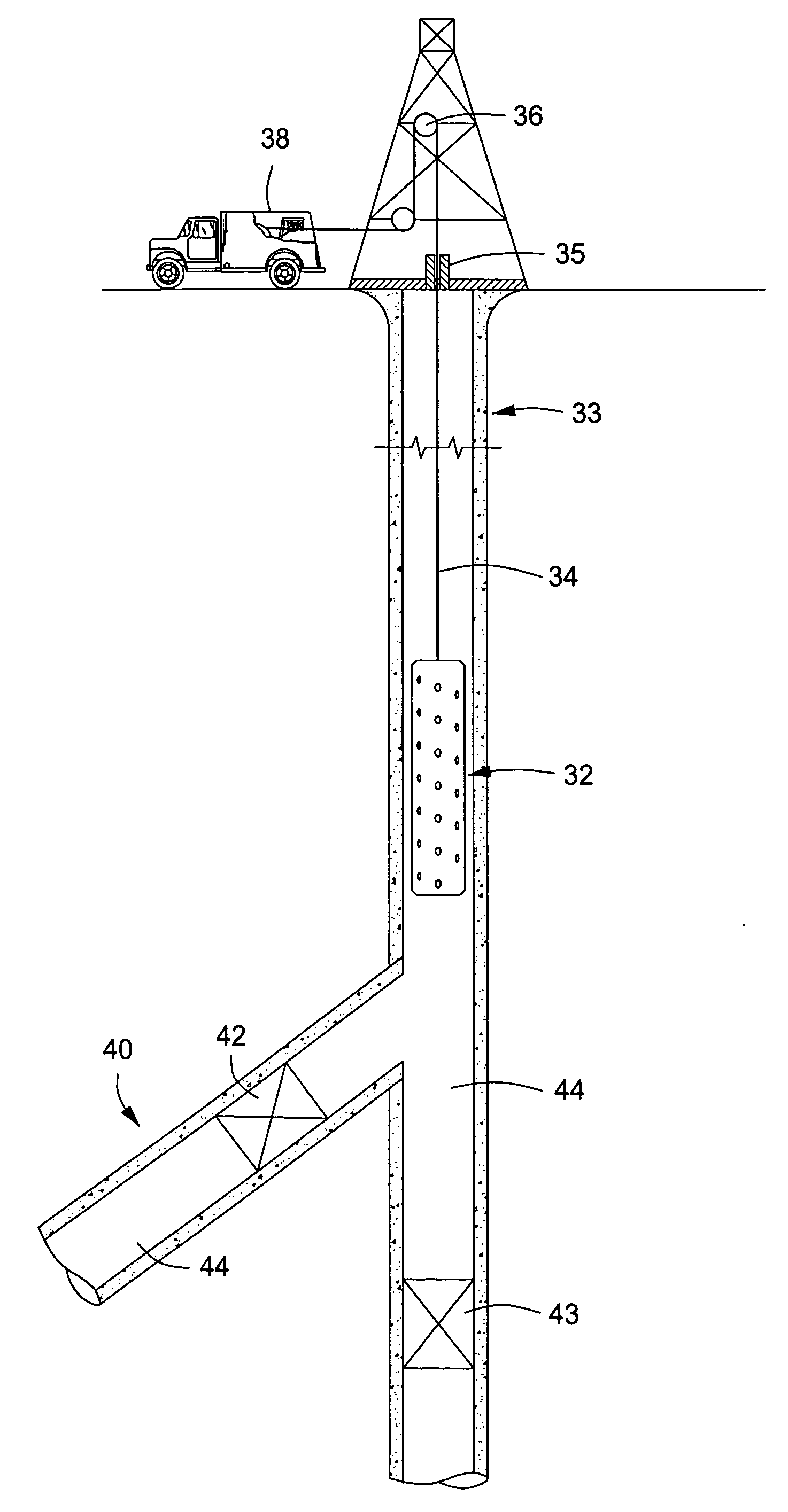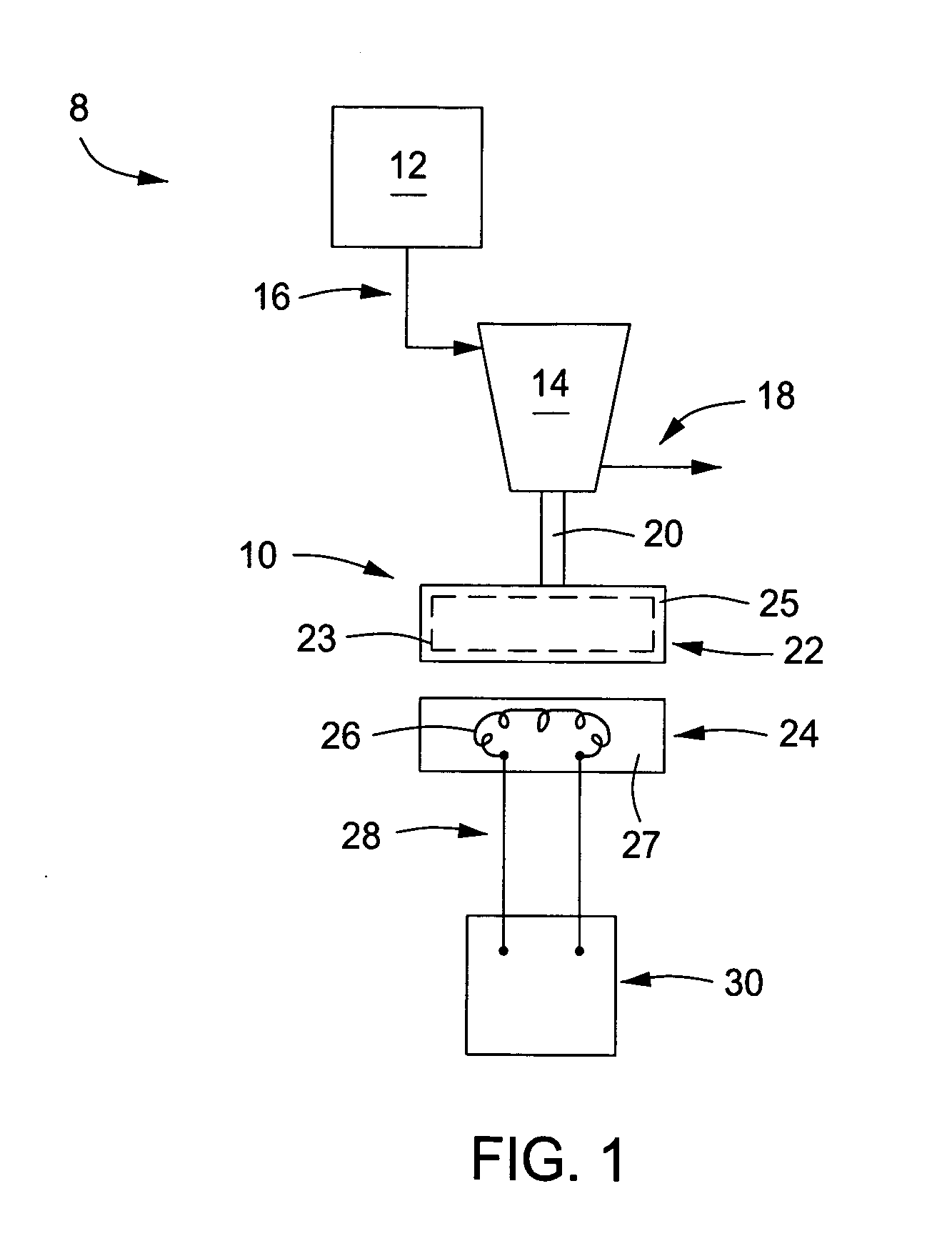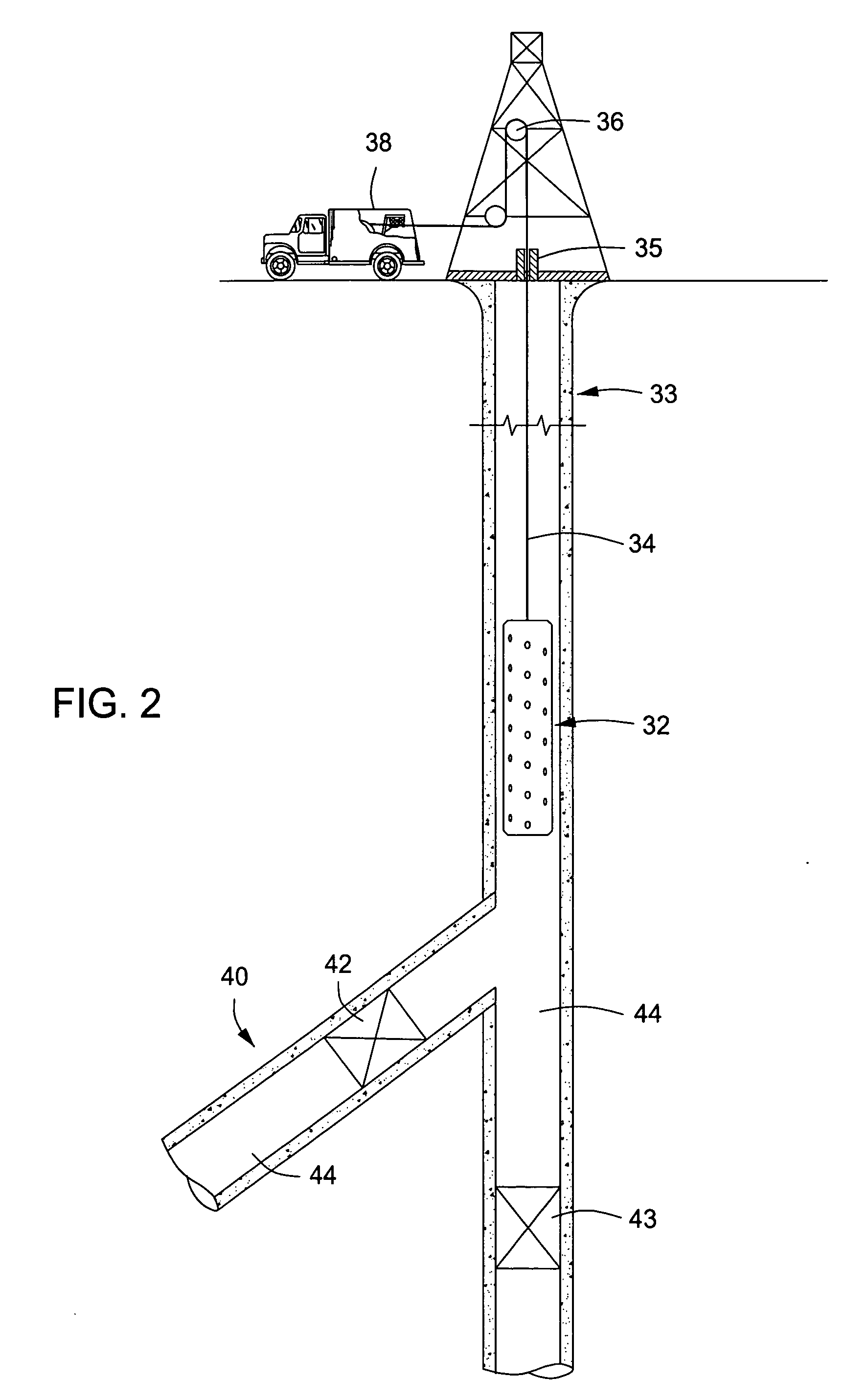Downhole power source
a power source and downhole technology, applied in the field of hydrocarbon production, can solve the problems of lithium batteries being easily exploding, lithium batteries can be quite expensive, and the batteries made from lithium batteries are not rechargeabl
- Summary
- Abstract
- Description
- Claims
- Application Information
AI Technical Summary
Benefits of technology
Problems solved by technology
Method used
Image
Examples
Embodiment Construction
[0014]The device and apparatus that is the subject of the present disclosure is a system for the generation of power for use downhole. One embodiment of a downhole power source 8 in accordance with the present disclosure is shown in schematically view in FIG. 1. The downhole power source 8 is comprised of a microgenerator 10 in communication with a motive gas source 12. The microgenerator 10 further comprises a rotor 22 that is in electromagnetic communication with a stator 24, wherein the electromagnetic communication is capable of producing an electrical current for powering a load 30.
[0015]As shown in this embodiment the microgenerator 10 comprises a rotational activation system, such as a turbine 14 mechanically connected to the rotor 22 via a shaft 20. Although the embodiment of FIG. 1 is shown in a side schematical view, it should be pointed out that the rotor 22 preferably has a disc like configuration wherein the diameter of the disc exceeds its thickness. Since the rotor 22...
PUM
 Login to View More
Login to View More Abstract
Description
Claims
Application Information
 Login to View More
Login to View More - R&D
- Intellectual Property
- Life Sciences
- Materials
- Tech Scout
- Unparalleled Data Quality
- Higher Quality Content
- 60% Fewer Hallucinations
Browse by: Latest US Patents, China's latest patents, Technical Efficacy Thesaurus, Application Domain, Technology Topic, Popular Technical Reports.
© 2025 PatSnap. All rights reserved.Legal|Privacy policy|Modern Slavery Act Transparency Statement|Sitemap|About US| Contact US: help@patsnap.com



